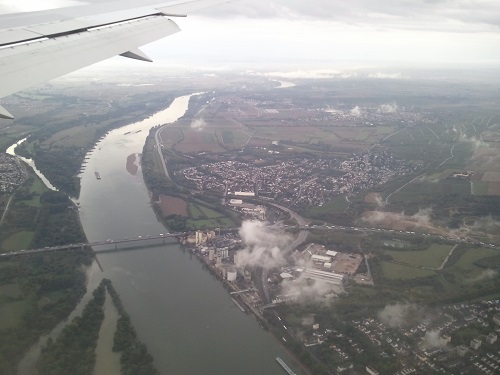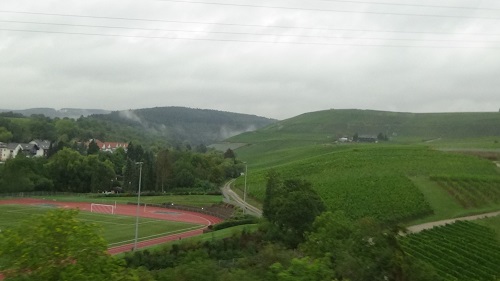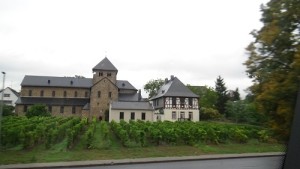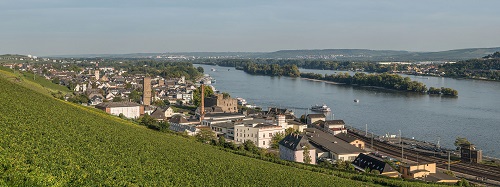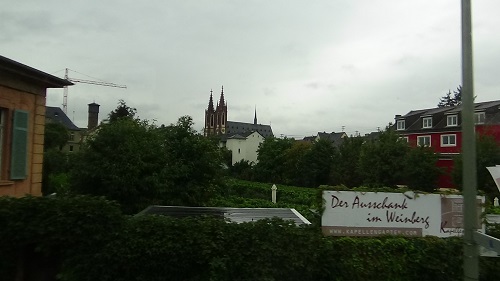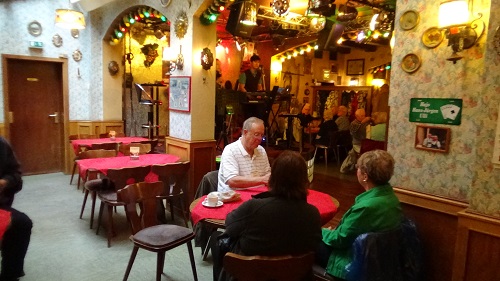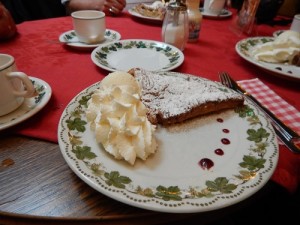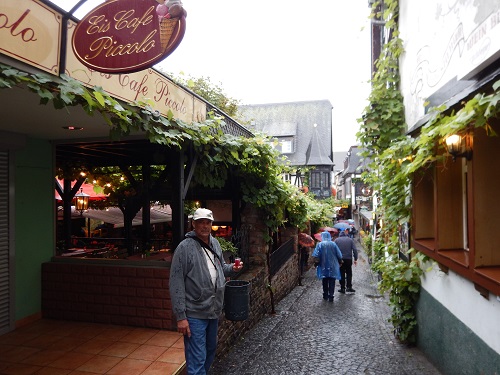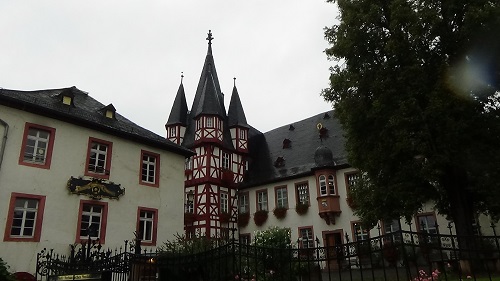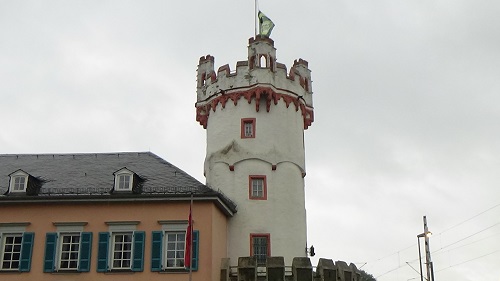We landed in Frankfurt Germany where we met Willi Flicker, our extremely knowledgeable and friendly local tour guide. Located near the confluence of the Main and Rhine rivers, Frankfurt, the 5th largest city in Germany, is the center of the larger Frankfurt Rhine-Main Metropolitan Region and is the financial hub for the European Union. Because of it’s financial importance and tall skyscraper buildings located close to the Main river, the business district of Frankfurt is referred to by locals as Mainhatten.
While we did not have time to explore Frankfurt, in addition to its important business district, the city is also home to many cultural and educational institutions, including the Johann Wolfgang Goethe University and Frankfurt University of Applied Sciences, many museums (e.g. Städel, Naturmuseum Senckenberg, Schirn Kunsthalle Frankfurt, Goethe House) and two major botanical gardens, the Palmengarten, which is Germany’s largest, and the Botanical Garden of Goethe University.
After leaving the Frankfurt airport we traveled by bus to the town of Rudesheim on Rhine river. While the weather was cloudy with scattered showers, the scenery along the drive was interesting with farm fields changing to rolling hills with vineyards eventually becoming predominate near the Rhine valley.
Most of the wine in the Rhine valley is a white Riesling type wine with a smaller percentage of reds based on the Pinot Noir grape variety (we will discuss wines in more detail in later postings).
Rudesheim is a winemaking town in the Rhine valley and part of the Frankfurt Rhine Main Region. It’s history goes back to pre-roman Celtic times. During the Roman era, starting around the first century, Rudesheim was a bridgehead along with a string of Rhine river fortifications that separated the ancient Roman provinces from the Germanic tribes.
Rudesheim still acts as a gateway to the UNESCO Romantic Rhine region, making it a UNESCO World Heritage Site and one of Germany’s biggest tourist attractions. Only Cologne Cathedral draws more tourists from other countries. Willi and Warren started our Rhine tour river here where we could discover the town starting with some coffee and apple straddle in a local café.
After our coffee break we walked about the town, dodging rain showers but enjoying all the atmosphere of all the shops.
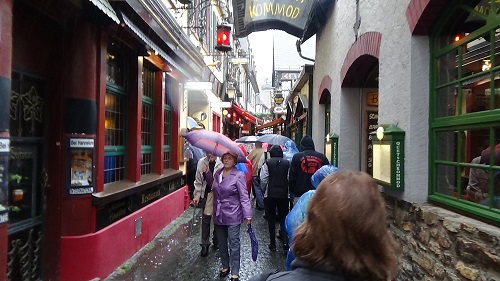
I stopped at one of the shops to have a glass of new wine. This wine is fermented to only 5% alcohol and served from a tap like beer – I felt it was very refreshing on such a damp day.
I believe one of the most predominate and beautiful architecture in the region is the Tudor half-timbered style buildings. The houses and buildings of the Tudor style were typically timber framed on the upper half. The timbered frame was then filled with what is called wattle and daub. Wattle and daub is a woven lattice of wooden strips called wattle that is daubed with a sticky material usually made of some combination of wet soil, clay, sand, animal dung, and straw. We will see many of these Tudor half-timbered building throughout many of the towns we visited.
Our Rudesheim town tour ended at the city dock where we boarded the river boat for a ride down the Romantic Rhine.
